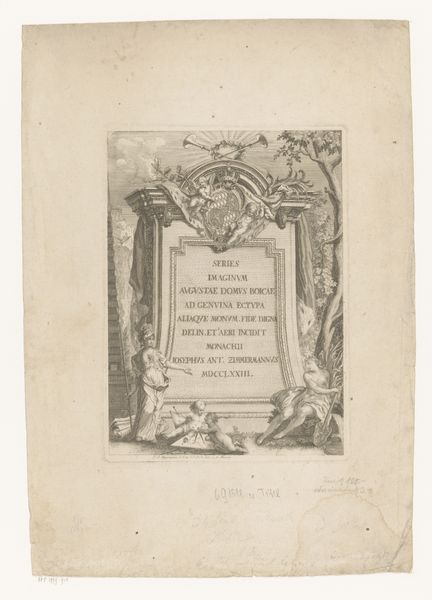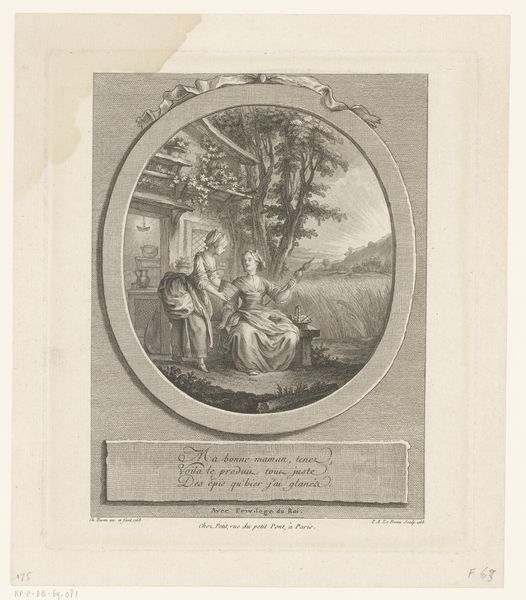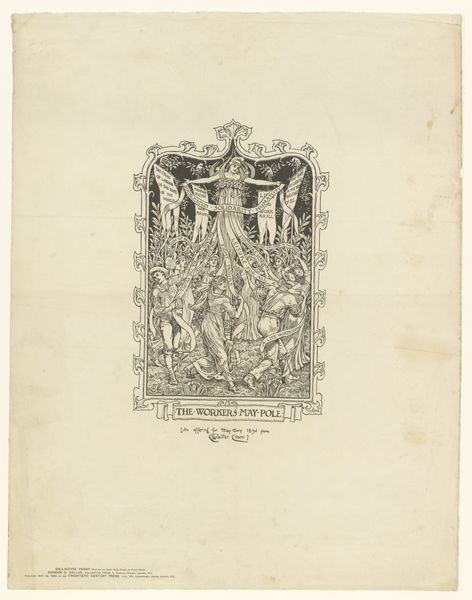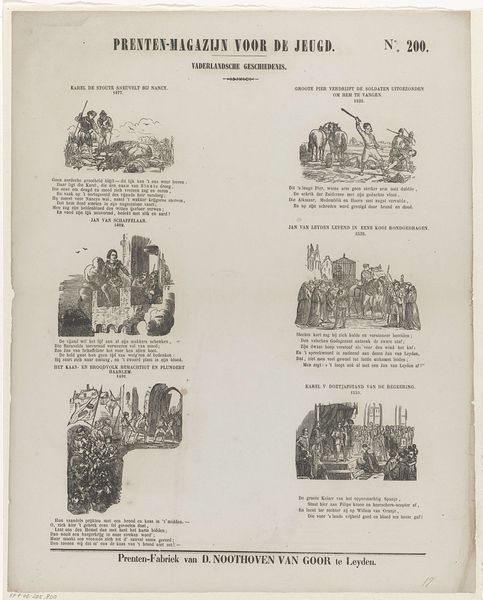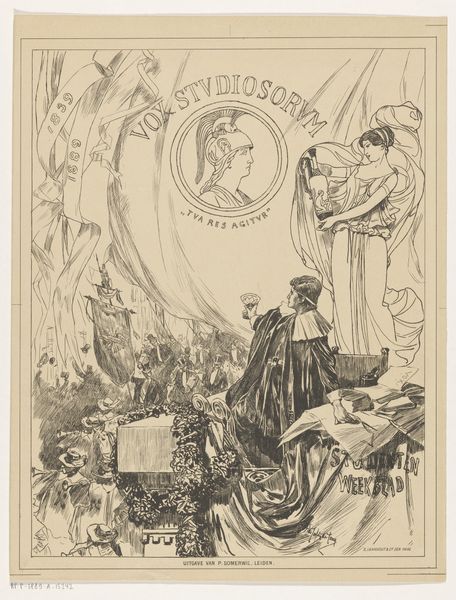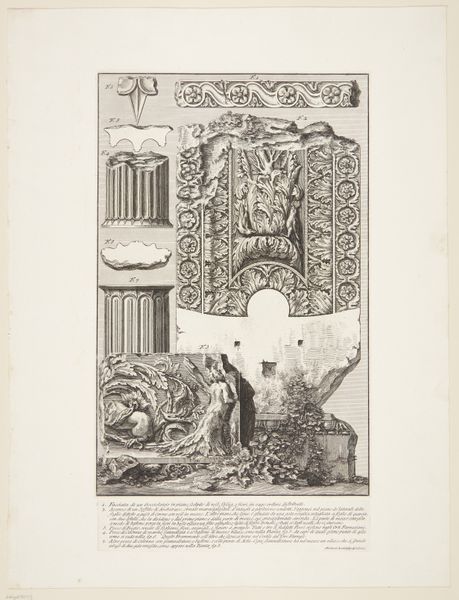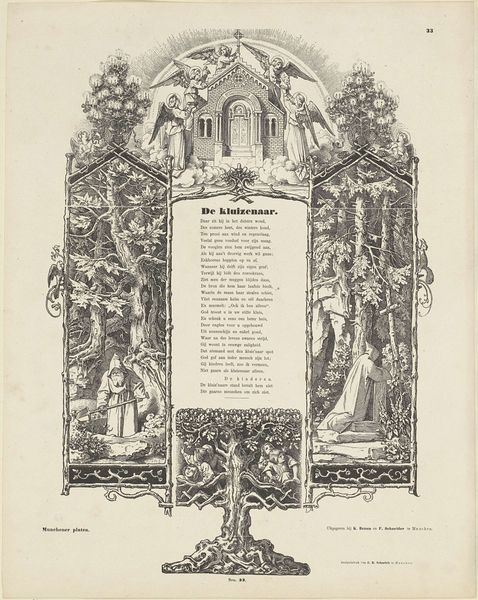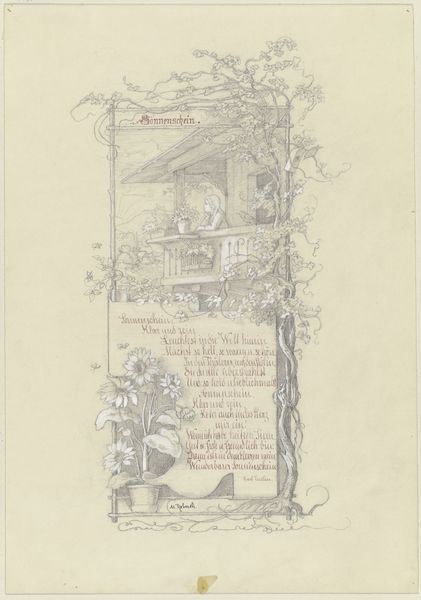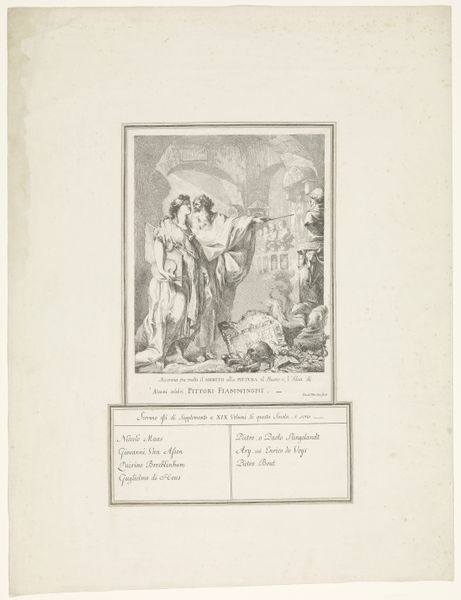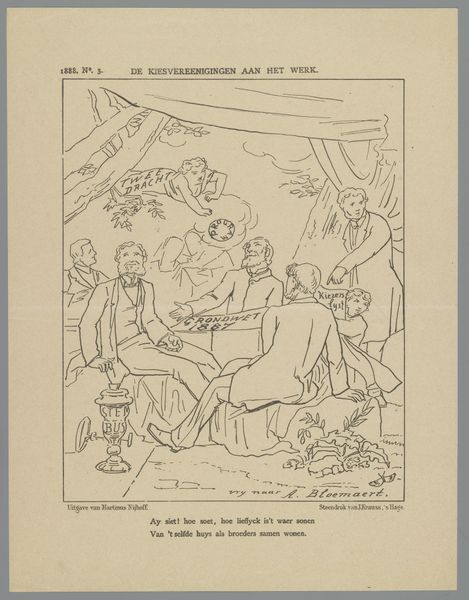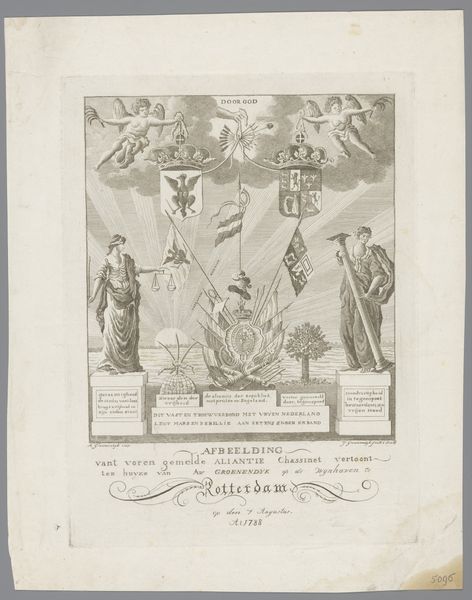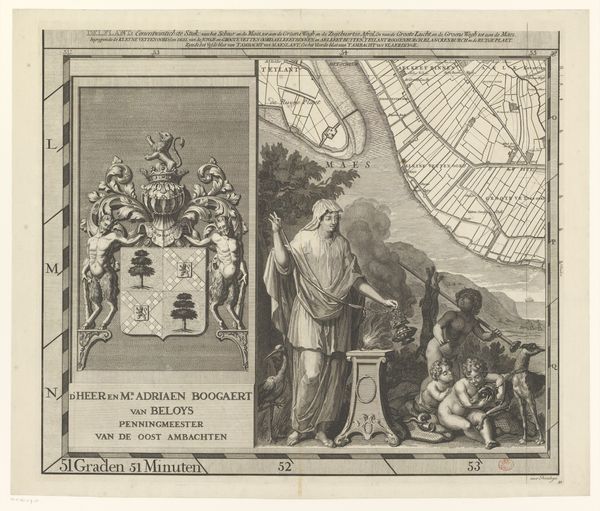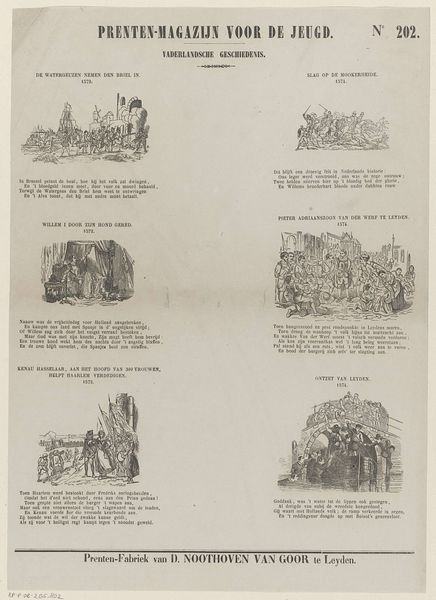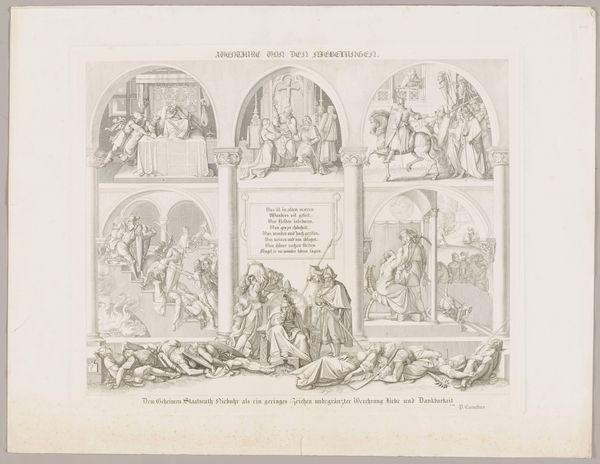
Oorkonde ter dank voor medewerking aan de internationale tentoonstelling van boeken en grafiek in 1914, te Leipzig Possibly 1914 - 1917
0:00
0:00
graphic-art, print, etching
#
graphic-art
# print
#
etching
#
landscape
#
figuration
#
history-painting
Dimensions: height 565 mm, width 453 mm
Copyright: Rijks Museum: Open Domain
Curator: This etching by Max Klinger is titled "Oorkonde ter dank voor medewerking aan de internationale tentoonstelling van boeken en grafiek in 1914, te Leipzig," or "Certificate of Thanks for Collaboration on the International Exhibition of Books and Graphics in Leipzig, 1914." Editor: My first thought is how much this certificate resembles a classical allegory despite its mundane, official nature. Curator: Indeed. These types of certificates served not only as acknowledgement but also as tools to connect institutions and ideas within a wider cultural exchange, using symbolism accessible to a European audience invested in classical forms. Editor: The central figure bursting from the ground holding a torch—almost a Statue of Liberty—certainly speaks to universal aspirations of enlightenment and progress. The figures flanking her seem like muses or representatives of different disciplines. Curator: The placement of these figures in what could be viewed as modern dress within a scene that blends history, urbanity, and what can only be defined as graphic design, seems pointed in making a particular claim about progress within the context of global industry in the early twentieth century. Note the deliberate contrast between the "historical" crowd on one side, seemingly frozen, and the progress they celebrate. Editor: Yet the scene isn’t celebratory. It has an anxiety to it. Perhaps the wisps of smoke and undefined borders hint at the instability of the era. What about the staff to the left of the certificate? It doesn’t seem classically informed. Is that war? Curator: It's hard to overlook the presence of a flag resembling one carried during the Napoleonic Wars. I’d agree that while this acknowledges an international gathering, the visual elements reflect anxieties and maybe the potential of upheaval brewing beneath the surface. Given it was designed around the beginning of World War I, that would have influenced how viewers interpreted the imagery and even today, in our modern viewership. Editor: So what starts as a tribute takes on layers of meaning, a somber undercurrent disrupting the ideal of international collaboration. Curator: Exactly. These artifacts remind us that the cultural landscape is far more nuanced than simple, clear celebration. They capture unspoken tensions and shifts in the cultural tides. Editor: I hadn't considered all of that, thanks! This seemingly straightforward certificate proves a great piece for interpreting social change at the time.
Comments
No comments
Be the first to comment and join the conversation on the ultimate creative platform.
